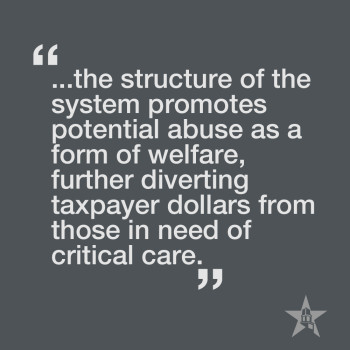In a 2005 ruling of the Canadian Supreme Court, Chief Justice Beverly McLachlin wrote the above title against existing bans on privatized health care. This concern amongst others was briefly disregarded, as the final judgment in favor of a reform expired. However, the Canadian Medical Association soon after adopted a motion supporting access to private sector services, realizing its necessity in the midst of untimely healthcare delivery by the single-payer healthcare system.
This realization in terms of the United States healthcare system was mentioned in the last article as “exclusively for those who can pay,” resulting in a deficit in the number of people receiving healthcare. A universal, socialized form of coverage would allegedly allow those unable to pay for insurance or out-of-pocket to receive healthcare. 
It may seem intuitive that the uninsured would receive lower quality care or would choose to forgo the care altogether. However, in a multidimensional study conducted by Helen Levy of the University of Michigan’s Economic Research Initiative on the Uninsured, and David Meltzer of the University of Chicago, no definitive “causal relationship” existed between health insurance and better health. Health insurance did not guarantee better health and vice versa. In another study conducted by the New England Journal of Medicine last year, “health insurance status was largely unrelated to the quality of care” despite the accompanying acknowledgment that numerous Americans were not receiving an appropriate level of care. In essence, those with or without insurance received the same quality of healthcare.
In light of the research, Federal Law requires that patients be treated regardless of their insurance status as mentioned in the previous article. All Americans have access to at least emergency care (whose waiting lines are much shorter than those in the socialized system), and hospitals are legally required to provide care regardless of the patient’s ability to pay. Although physicians are not held under the same legal jurisdiction, numerous physicians are still willing to provide treatment despite a lack of insurance. This aspect is a “petty appeasement” in that patients are still required to pay for treatment over a longer term. However, even the progressively-minded, famed science fiction writer Robert A. Heinlein realizes that “nothing of value is free” – a phrase proponents of socialized healthcare seem to forget within their own system with higher taxes accounting for the free-for-all healthcare.
In spite of this lapse, a larger problem occurs with the funneling of these higher taxes into the largest business monopoly in the country, the government. As a large monopoly, the “business” is expensive and inefficient in contrast to the private sector when attempting to receive same levels of quality as briefly mentioned in the first article. While the United States spends more on healthcare per capita than other nations in the world as of 2011, quality of healthcare in other countries is hurting and even lacking with most other services aside from general medicine (e.g. dentistry, optometry, pharmaceutical drugs) not covered under the universal system, incentivizing those in need to pay for private insurance anyway. This lack of services offered is a result of underfunding of the overarching system with increased numbers of organizations and personnel. While the solution to this is increased funding (i.e. increased taxes), quality of healthcare seems to never improve with the extra money channeled into those ambitions deemed suitable by the government – a problem more easily exterminated in the arena of the free market heavily influenced by consumerist decisions.
As a final thought for this article, I would like to acknowledge that the free market has its own sets of issues somewhat outlined in the previous article preventing it from being a one trick pony to healthcare for all. However, this system has more flexibility to repair errors and inefficiencies than that of the public sector where solutions provided by sources outside of the government cannot be implemented. It is much more difficult to revert from a monopolized system in the midst of inevitable predicaments making the public sector a danger in healthcare enhancement.


 With the upcoming presidential elections, most of us have recently heard some form of a promise for free, government-funded healthcare or perhaps the more “costly” privatized version as a remedy for this worldwide predicament at the country’s level. Some of us have even ascribed to certain stances on these systems citing familial circumstances, moral convictions, or even mere general preference in support of our personal viewpoints. However, a large majority of us have failed to thoroughly examine these systems in terms of broader, far-reaching pros and cons.
With the upcoming presidential elections, most of us have recently heard some form of a promise for free, government-funded healthcare or perhaps the more “costly” privatized version as a remedy for this worldwide predicament at the country’s level. Some of us have even ascribed to certain stances on these systems citing familial circumstances, moral convictions, or even mere general preference in support of our personal viewpoints. However, a large majority of us have failed to thoroughly examine these systems in terms of broader, far-reaching pros and cons.